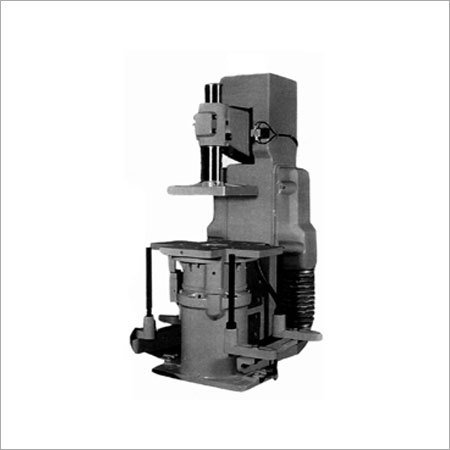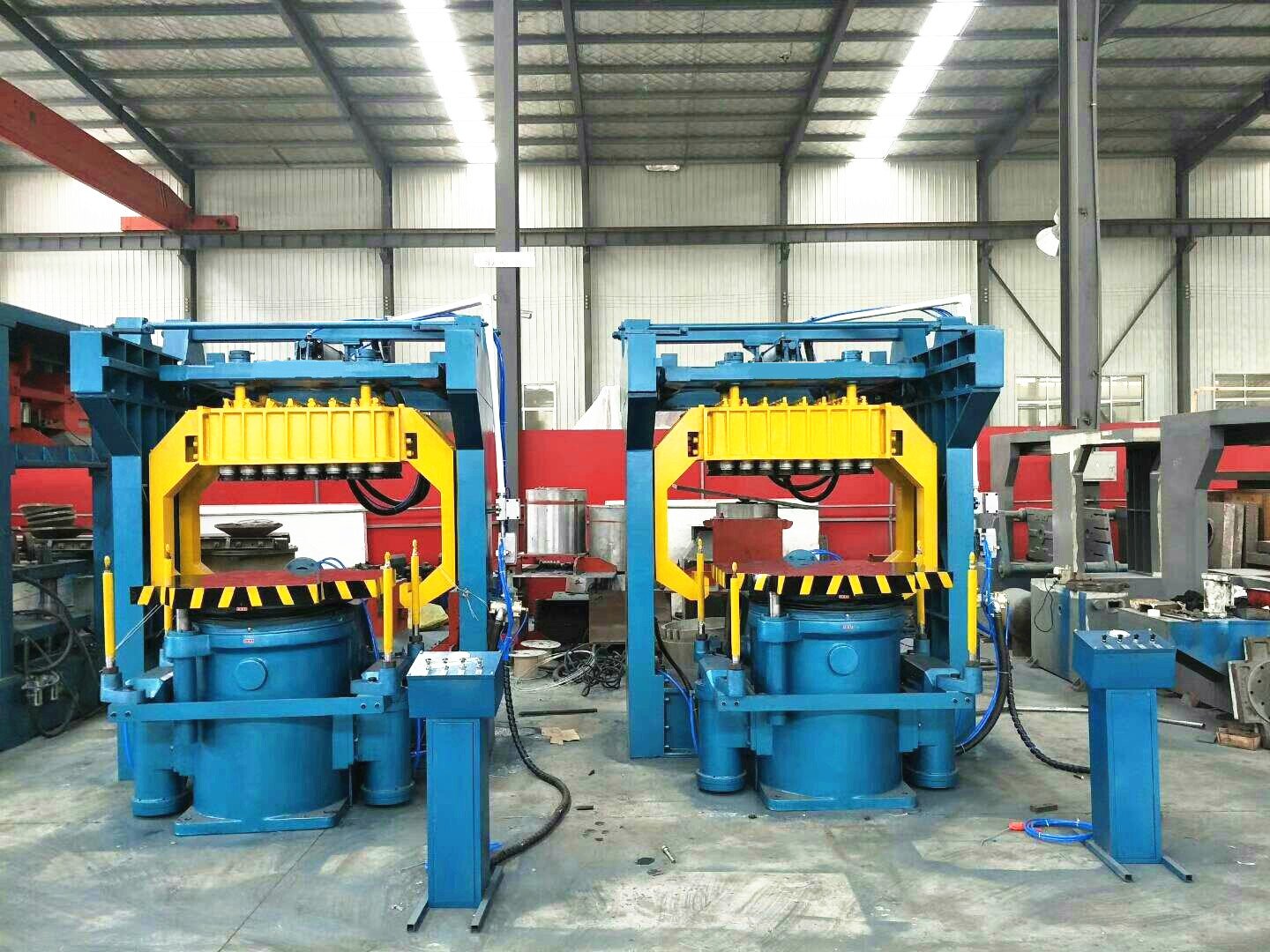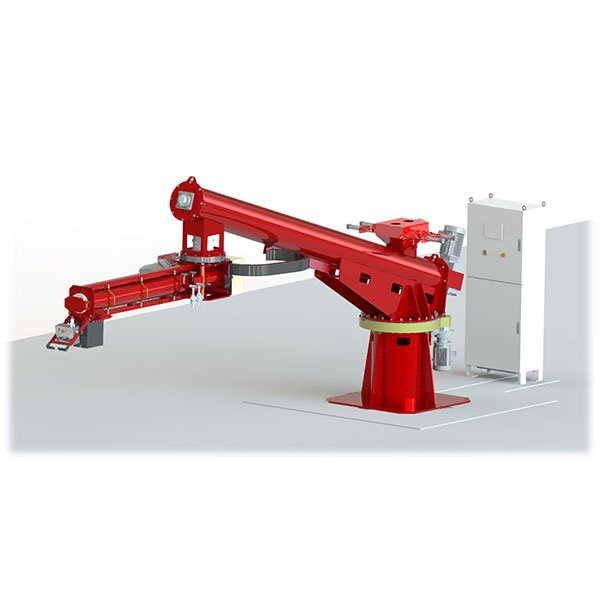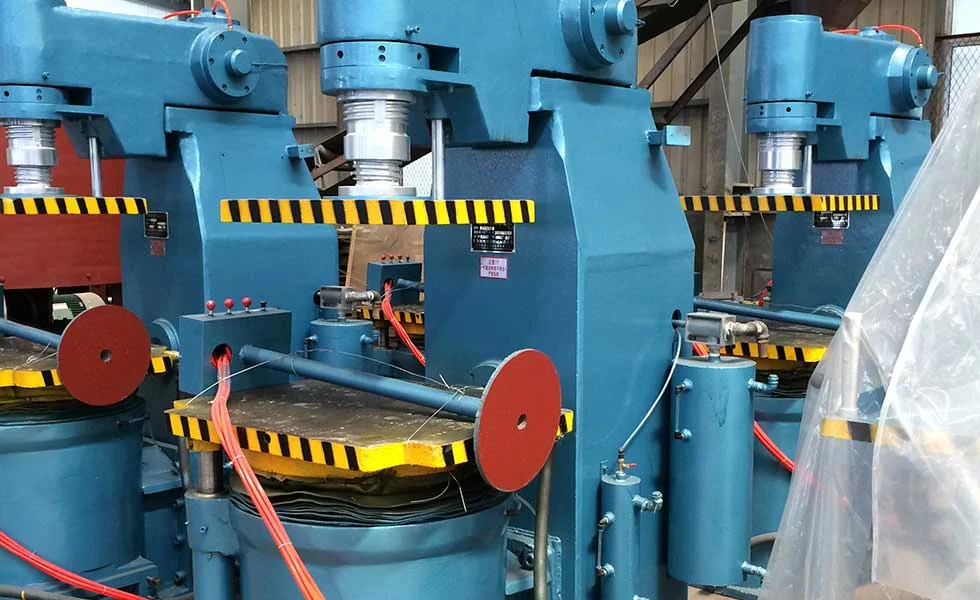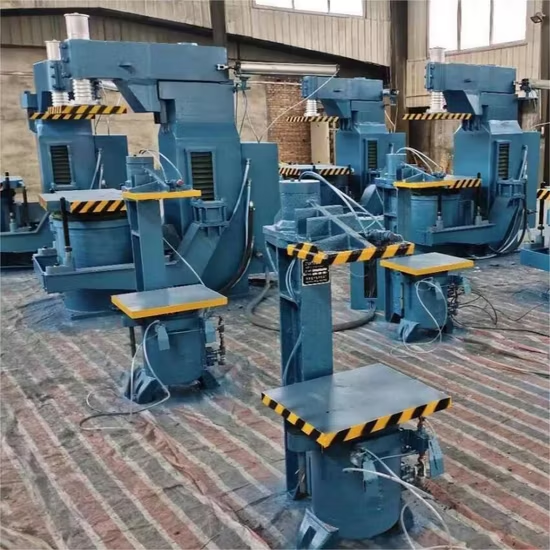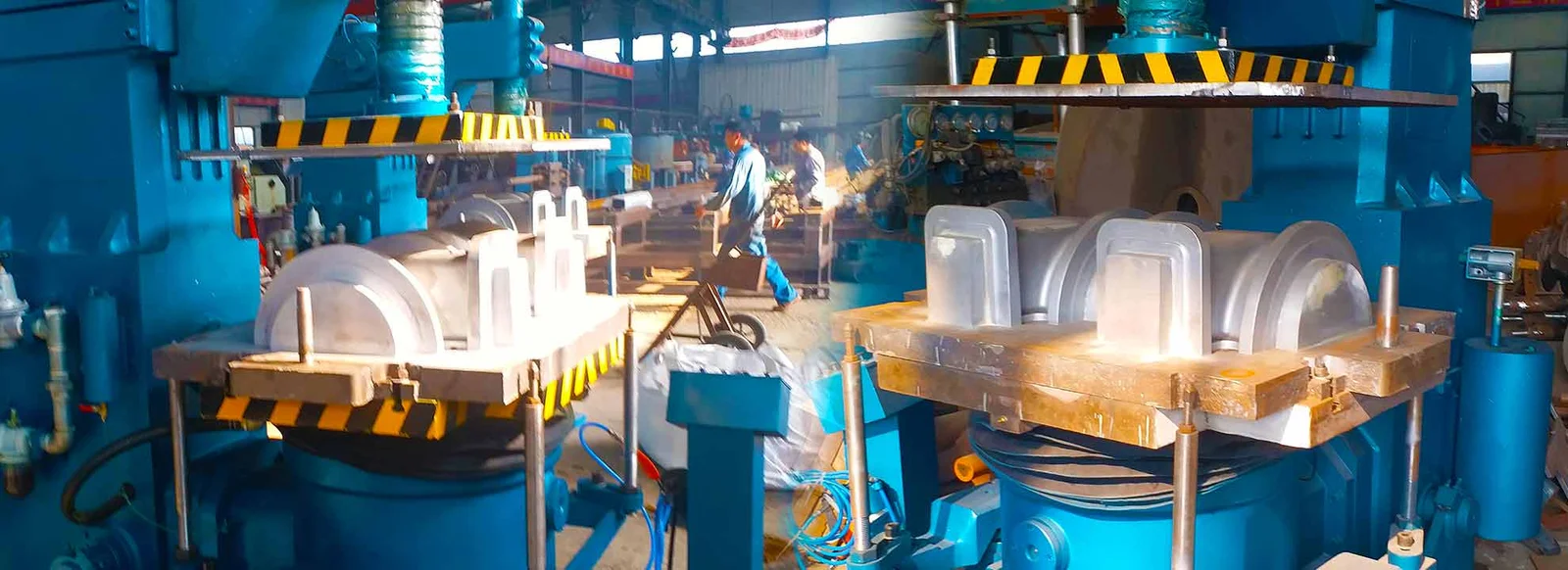
Are inconsistent sand molds slowing down your production and increasing casting defects?
A jolt squeeze molding machine is a mechanical molding device that compacts sand uniformly around a pattern using vibration and pressure—delivering high-quality, repeatable molds for foundry operations.
If you're in the casting business and looking for a cost-effective yet efficient molding method, keep reading—this machine might be exactly what your foundry needs.
What is a Jolt Squeeze Molding Machine?
Are you still molding by hand and dealing with uneven compaction and mold collapse?
A jolt squeeze molding machine is a semi-automatic or automatic device used in the sand casting process. It combines jolting (vibration) and squeezing (compression) to produce uniform molds.
Jolt squeeze molding machines are widely used in foundries to improve the precision and efficiency of sand mold creation. By integrating two mechanical processes—jolting and squeezing—this equipment ensures even sand distribution and firm compaction around the pattern. Typically, it's used in small to medium batch casting operations for a variety of metals, both ferrous and non-ferrous.
How Does a Jolt Squeeze Molding Machine Work?
Ever wonder how foundries create consistent molds without robotic automation?
The jolt squeeze molding machine uses a two-phase process: jolting for sand packing and squeezing for compaction—delivering consistent mold density every cycle.
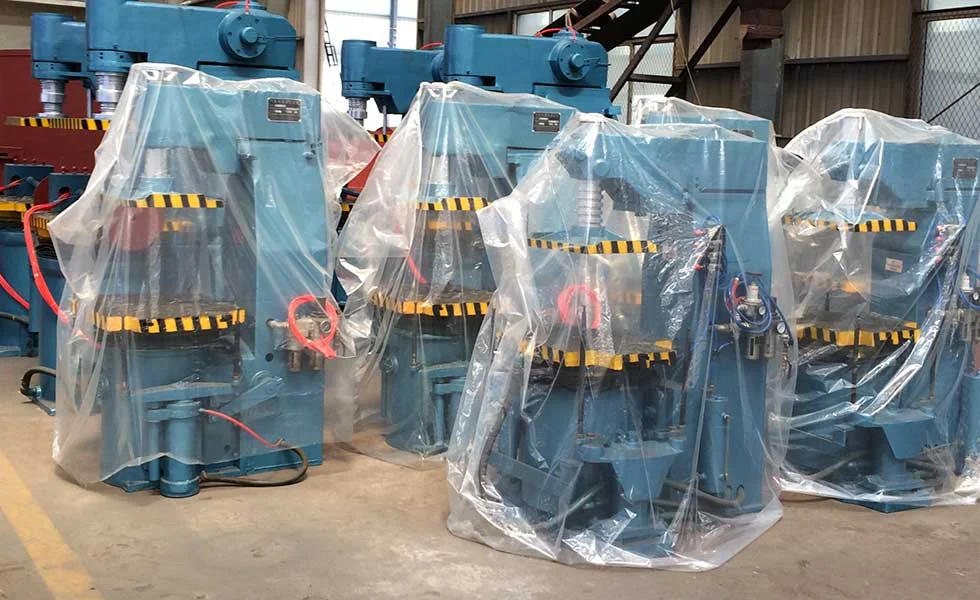
Step-by-Step Breakdown:
Pattern Setup
The pattern is placed on the pattern plate, aligned with the mold box.Sand Filling
The mold box is filled with foundry sand from the sand hopper.Jolting Phase
The machine raises and drops the mold box rapidly (jolting), which causes the sand to settle and pack around the pattern.Squeezing Phase
A squeeze head descends and applies downward pressure, compressing the sand tightly around the pattern to ensure shape integrity.Mold Removal
The mold is removed and prepared for pouring.
This combination of jolting and squeezing delivers uniform mold hardness and reduces voids or defects, crucial for consistent casting results.
Key Components of a Jolt Squeeze Molding Machine?
Is your machine breaking down often because of unclear component design?
A jolt squeeze molding machine has several key parts: pattern plate, sand hopper, mold box, squeeze head, and jolting mechanism—each playing a crucial role in the molding cycle.
Table: Core Components Overview
| Component | Function |
|---|---|
| Pattern Plate | Holds the pattern firmly during the molding cycle |
| Sand Hopper | Feeds molding sand into the flask |
| Mold Box (Flask) | Container where sand is compacted around the pattern |
| Squeeze Head | Applies pressure to compress sand during squeezing phase |
| Jolting Mechanism | Lifts and drops mold box to compact sand via vibration |
| Pneumatic/Hydraulic | Powers the squeezing and jolting actions |
Understanding these components is essential for both operation and maintenance. Regular inspection of the jolting mechanism and squeeze head is particularly important to ensure uniform mold production.
Advantages of Jolt Squeeze Molding Machines?
Manual mold making too slow and inconsistent for your production goals?
Jolt squeeze molding machines offer speed, uniformity, and reliability—ideal for job shops and small-scale foundries needing efficiency without full automation.

Advantages at a Glance
- Uniform Mold Density: Better compaction reduces casting defects.
- Increased Productivity: Faster cycle times than manual processes.
- Cost-Effective: Lower upfront investment than fully automatic systems.
- Low Maintenance: Easy to maintain and operate with minimal training.
This balance of speed, quality, and simplicity makes it the go-to choice for many of my customers running mid-volume production lines.
Limitations and Considerations?
Expecting fully automated results from semi-automatic equipment?
While efficient, jolt squeeze molding machines are not suitable for large-scale castings or highly intricate designs that demand robotic precision.
Considerations Before You Invest:
- Size Limitations: Not ideal for very large or deep molds.
- Detailing: Complex patterns may require additional finishing or manual intervention.
- Operator Dependency: Although semi-automatic, human oversight and setup are still crucial.
If you're casting engine blocks or large chassis parts, a fully automatic line might be better suited. But for smaller, less complex parts—this machine is more than capable.
Applications in Industry?
Looking for real-world examples of jolt squeeze machines in action?
These machines are extensively used for producing automotive parts, engine housings, and in general foundry operations—particularly in small to mid-scale foundries.
Typical Applications:
- Automotive: Gearboxes, brake housings, and suspension components
- Industrial Machinery: Pump bodies, motor casings
- Foundry Job Shops: Short-run production of customized cast parts
- Metals: Suitable for aluminum, bronze, cast iron, and more
Their versatility and reliability make them a practical choice for industries needing repeatable results without a massive capital outlay.
Jolt Squeeze vs Other Molding Machines?
Confused between different molding technologies?
Compared to manual and fully automatic systems, jolt squeeze molding machines offer a sweet spot of affordability and performance for medium-volume operations.
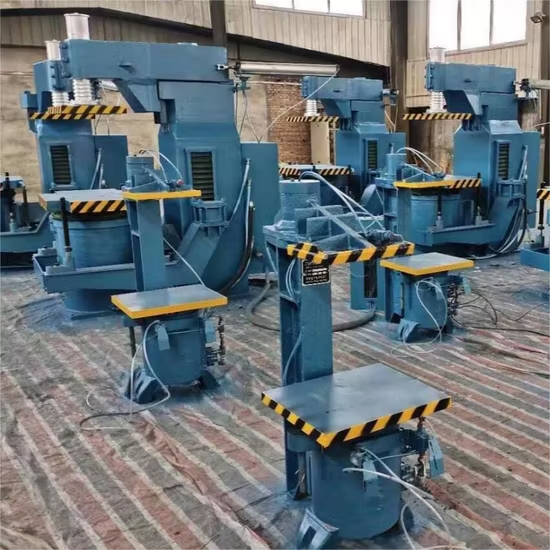
Comparison Table
| Feature | Manual Molding | Jolt Squeeze | Fully Automatic Line |
|---|---|---|---|
| Mold Consistency | Low | Medium-High | Very High |
| Investment Cost | Low | Medium | Very High |
| Speed | Slow | Medium | Fast |
| Operator Skill Needed | High | Medium | Low |
| Ideal Batch Size | Small | Small-Medium | Medium-Large |
| Maintenance Complexity | Low | Medium | High |
This comparison helps most of my clients decide what fits their budget and output needs best.
Is a Jolt Squeeze Molding Machine Right for Your Foundry?
Still unsure if this machine fits your production line?
A jolt squeeze molding machine is ideal for small to medium foundries focused on quality and cost-efficiency—without sacrificing mold accuracy.
Key Questions to Ask:
- Do you run low to medium volume batches?
- Are your castings simple to moderately complex?
- Is cost control important, but you still want consistent quality?
- Do you have trained operators available for setup and monitoring?
If you answered “yes” to most, a jolt squeeze machine could be your best next investment.
Conclusion
A jolt squeeze molding machine offers a practical balance between cost, quality, and production speed. For small to medium foundries, it's a powerful tool that can significantly improve casting results and operational efficiency.
FAQs
Q: What is the difference between jolt and squeeze in molding?
A: Jolting packs sand by vibration; squeezing compacts it under pressure. Both ensure dense, uniform molds.
Q: Can a jolt squeeze machine be automated?
A: Yes, many come with semi-automatic or automatic options, depending on model and control systems.
Q: What types of sand are compatible with this machine?
A: Most foundry sands work, including green sand and resin-coated sand, provided they are properly conditioned.


